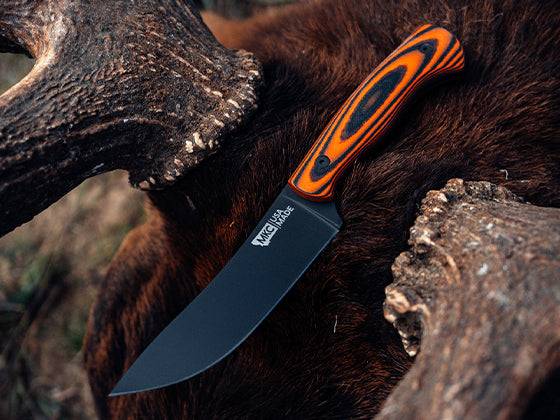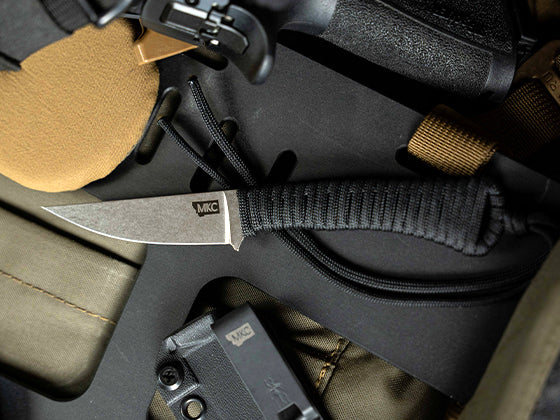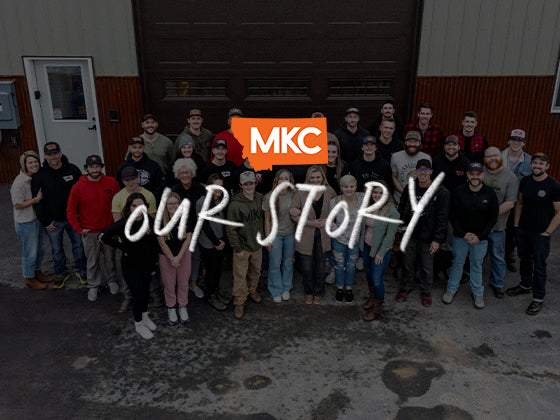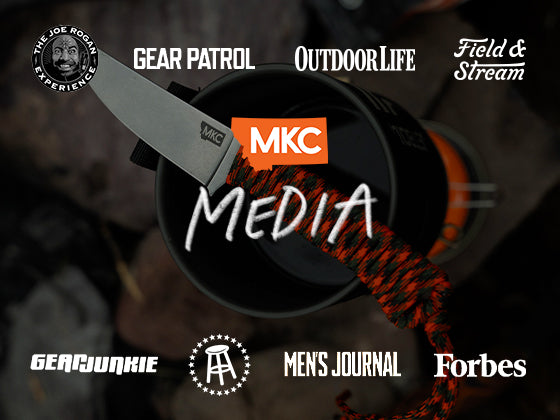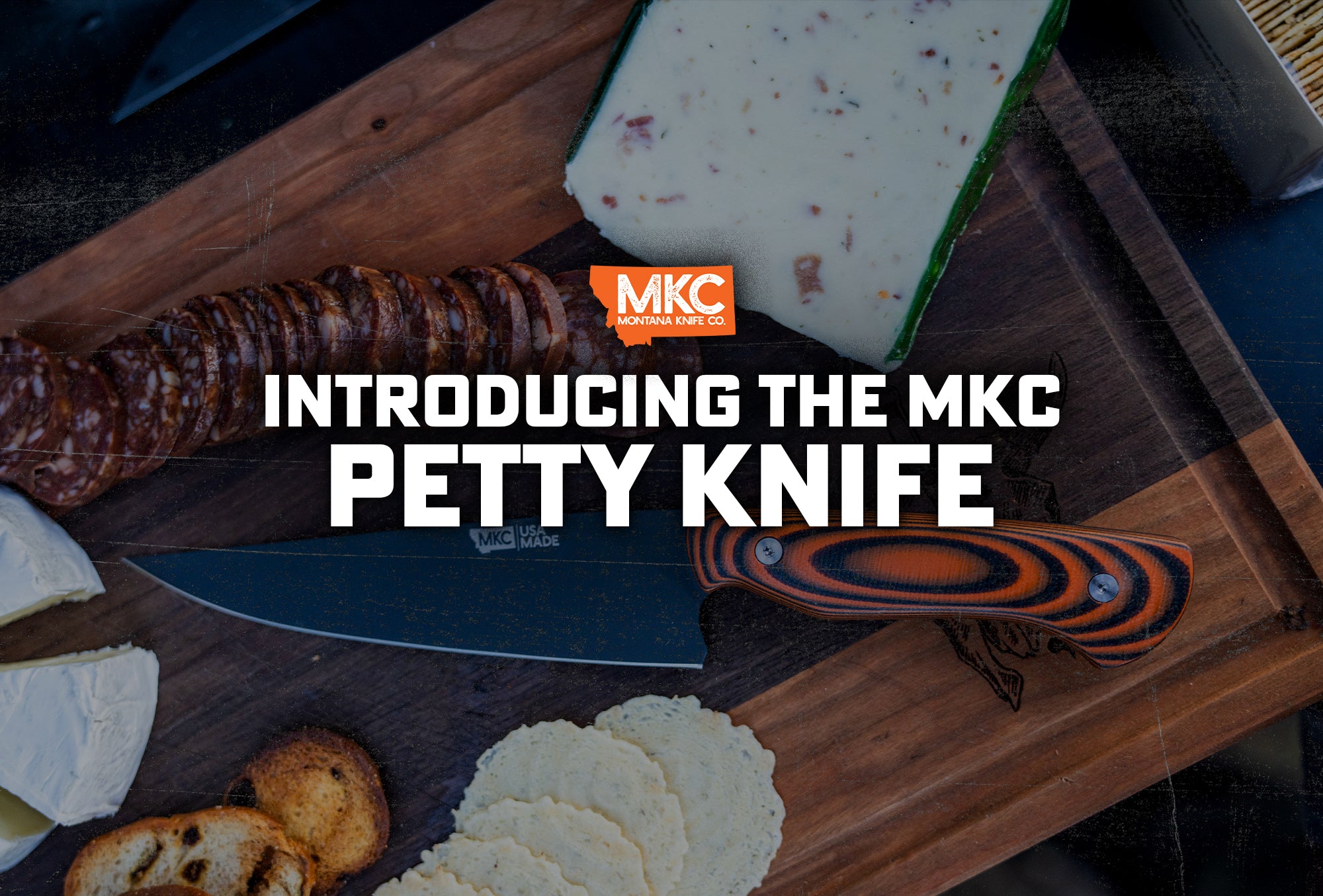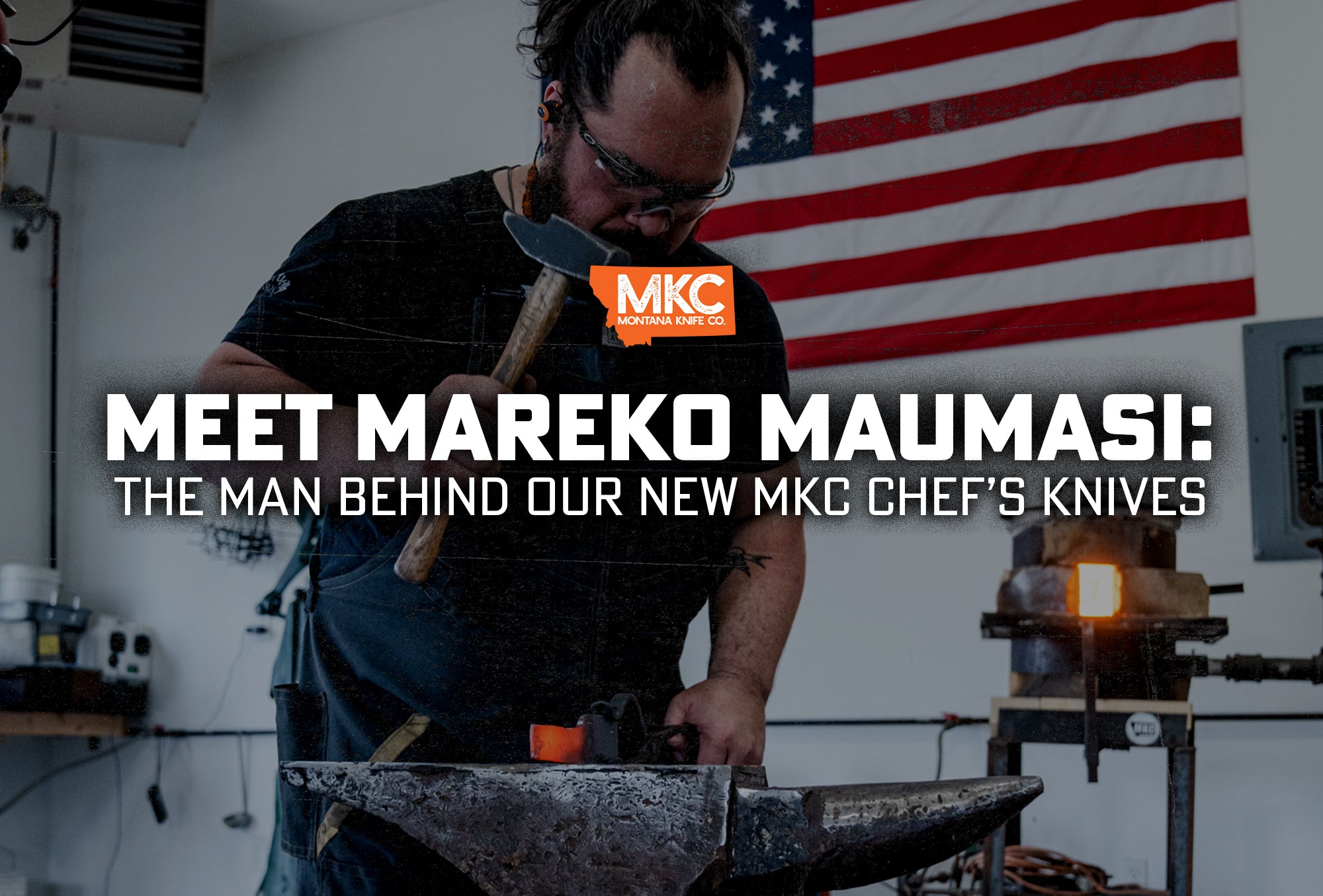We loved Mareko Maumasi’s design of the Bighorn Chef’s Knife and wanted to continue working with him to build out our culinary line. What he came up with next is pretty amazing: the brand new MKC Santoku Knife.
Why a Santoku Knife?
As knife makers, we really appreciate how other cultures design unique knives based on what they cook and eat. Our country is full of people from so many different places, and we have an amazing variety of cuisines. The Bighorn Chef’s Knife is incredibly well-suited for American-style cooking, and the MKC Santoku Knife is an innovative take on a different knife from a different country.
What Is a Santoku Knife Used For?
In Japanese cooking, the santoku knife typically serves as a vegetable knife. It’s handy for slicing, dicing, chopping, and mincing things like carrots, peppers, onions, cabbage, and all kinds of vegetables and fruits in the kitchen.
The beauty of a santoku knife is that it’s a great general-purpose knife. For most of us, our day-to-day needs don’t require the larger chef’s knife. We might use it for slicing big items like a brisket or roast, but the extra length can make it unwieldy for smaller tasks.
When we simply need a handy blade for making a sandwich or cutting apples for the kids’ lunches, most people reach for a santoku knife. The shorter length makes the santoku less intimidating and more welcoming for these everyday tasks.

Purposeful Design
Like the Bighorn Chef’s Knife, the MKC Santoku Knife benefits from Mareko’s extensive experience in commercial kitchens. He knows exactly what a santoku design needs in order to create a functional, ergonomic, durable blade.
For example, the geometry of a santoku knife, especially in the edge profile, is key. The spine of the MKC Santoku sweeps up, and the wide blade and angled heel provide plenty of hand and knuckle clearance between you and your cutting surface.
Mareko was purposeful even in the small design details, like dropping the Santoku Knife’s tip sharply down so owners can easily use it for fine chopping work. Every aspect of his design creates functionality.
A Good Size for Everyone
The size of a santoku knife makes it the go-to knife for people across a wide range of ages and kitchen experience. I personally reach for the MKC Santoku Knife’s shorter, 7-inch length daily — because it’s just so handy, light, inviting, and friendly to use.
When my kids were young and learning to work with knives in the kitchen (of course, under my close supervision) a santoku knife was perfect for teaching. I didn’t want to hand them a giant chef’s knife with too much blade and tip for them to manage. A santoku knife is much less intimidating and offers better control, especially for newer and younger cooks.
Buy the Knife You’re Going to Use
When people reach out to Mareko for custom knife builds, they often think that the biggest bang for their buck is going to be the biggest chef’s knife they can get. But when he asks them which knife they actually use in the kitchen, the reality is that most people aren’t reaching for a large chef’s knife or a small paring knife on a daily basis. They’re reaching for something in between — about the size of a santoku knife.
A santoku knife takes care of all the work most people need on a daily basis. If I’m cooking in the kitchen, this is the knife I reach for.
by Josh Smith, Master Bladesmith and Founder of Montana Knife Company
























